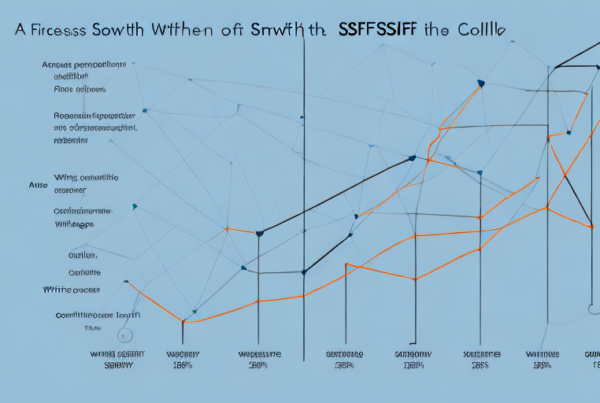Are you feeling overwhelmed by the complexities of your SMSF’s tax obligations? With 2023 fast approaching, it’s important to take a closer look at your fund’s tax planning strategies. In this article, we’ll explore the key considerations and expert advice to help you navigate the tax landscape and keep your SMSF on track.
Understanding SMSF Tax Planning
Before diving into the specifics, it’s important to have a solid understanding of what SMSF tax planning entails. Put simply, it’s the process of managing your fund’s tax obligations in a way that maximizes benefits and minimizes liabilities. With the right strategies in place, you can potentially reduce your tax burden and improve your SMSF’s long-term financial position.
What is an SMSF?
For those new to the world of SMSFs, it’s worth briefly outlining what they are. SMSFs are superannuation funds that are managed by the trustees themselves, rather than a third-party fund manager. As such, SMSF trustees have a greater level of control over investments and asset allocation.
One of the main benefits of an SMSF is the ability to tailor the fund’s investments to the specific needs and goals of the members. This can include investments in property, shares, managed funds, and more. Additionally, SMSFs can have up to four members, which can be beneficial for families or business partners looking to pool their retirement savings.
The Importance of Tax Planning for SMSFs
Given the size and complexity of many SMSF portfolios, effective tax planning is crucial. Without careful management, the tax implications of your investments could significantly erode your returns and hold back your fund’s growth. By proactively managing your tax obligations, you can potentially improve your SMSF’s financial position and help it achieve its long-term goals.
It’s worth noting that SMSFs are subject to a range of tax obligations, including income tax, capital gains tax, and stamp duty. Additionally, there are specific rules and regulations around contributions, withdrawals, and pension payments that must be carefully managed to avoid unnecessary tax liabilities.
Key Tax Considerations for SMSFs
So, what are the specific tax considerations to keep in mind when managing an SMSF? A few key areas to focus on include:
-
- Contributions: The tax implications of contributions, including caps and strategies for minimizing tax liabilities.
When making contributions to your SMSF, it’s important to be aware of the annual contribution caps. These caps limit the amount of money that can be contributed to the fund each year without incurring additional tax. Additionally, there are strategies such as salary sacrificing and spouse contributions that can help minimize your tax liabilities and boost your retirement savings.
-
- Investments: Understanding the tax benefits and implications of different investment types, managing capital gains and losses, and diversifying your SMSF investments.
The tax implications of different investment types can vary widely, so it’s important to have a solid understanding of the tax benefits and risks associated with each. For example, property investments can provide rental income and potential capital gains, but may also come with additional costs such as land tax and maintenance expenses. Similarly, shares and managed funds can provide diversification and potentially higher returns, but may also be subject to market volatility and capital gains tax.
-
- Pensions: Strategies for managing pensions, including account-based and transition to retirement pensions, and the tax implications of each.
When it comes to managing pensions from your SMSF, there are a range of strategies to consider. For example, account-based pensions provide regular income payments and potential tax benefits, while transition to retirement pensions can be used to supplement your income while still working. It’s important to carefully manage your pension payments to avoid unnecessary tax liabilities and ensure your retirement savings last as long as possible.
By focusing on these key tax considerations and implementing effective tax planning strategies, you can potentially improve your SMSF’s financial position and help it achieve its long-term goals.
Expert Advice on SMSF Contributions
Managing contributions is one of the most important areas of SMSF tax planning. By understanding the tax implications of contributions, you can potentially reduce your SMSF’s tax liabilities and improve your returns. However, there are various factors to consider when managing contributions, including contribution caps and taxation rules. In this article, we’ll explore some expert advice on SMSF contributions to help you make the most of your SMSF.
Concessional Contributions
Concessional contributions are those made before tax. They include employer contributions, such as Super Guarantee and salary sacrifice, as well as personal contributions for which you claim a tax deduction. These contributions are taxed at a flat rate of 15%, which can be significantly lower than your personal marginal tax rate. However, it’s important to be aware of the contribution caps that apply.
For the 2022/23 financial year, the cap is $27,500 for all individuals, regardless of age. It’s also worth noting that excess concessional contributions may be subject to additional tax, so it’s important to carefully manage your contributions throughout the year. One way to manage your concessional contributions is to contribute regularly throughout the year, rather than making a lump sum contribution at the end of the financial year.
Non-Concessional Contributions
Non-concessional contributions are those made after tax. They include personal contributions for which you do not claim a tax deduction, as well as spouse contributions and other personal contributions. These contributions are not taxed when they are made, but earnings on those contributions will be taxed at the standard SMSF tax rate of 15%.
For the 2022/23 financial year, the non-concessional contribution cap is $110,000. However, if you are under the age of 67, you may be eligible to make “catch up” contributions of up to $330,000 in a single year. It’s important to note that if you exceed the non-concessional contribution cap, you may be subject to additional tax.
Contribution Caps and Strategies
To make the most of your SMSF, it’s important to carefully manage your contributions and work within the contribution caps. One effective strategy is to “smooth” your contributions over multiple years, rather than making large contributions in a single year. By doing so, you can potentially reduce your tax liabilities and ensure that you stay within the contribution caps.
Another strategy is to consider the timing of your contributions. For example, if you expect your income to be higher in a particular financial year, you may want to make additional concessional contributions to reduce your taxable income. On the other hand, if you expect your income to be lower in a particular financial year, you may want to make non-concessional contributions to take advantage of the lower tax rate.
It’s also worth considering the impact of contribution caps on your retirement savings. While contribution caps are designed to ensure that individuals don’t contribute too much to their SMSF, they can also limit your ability to save for retirement. One way to address this is to consider alternative retirement savings strategies, such as investing in property or shares outside of your SMSF.
In summary, managing contributions is a key aspect of SMSF tax planning. By understanding the contribution caps and taxation rules, you can make informed decisions about your contributions and potentially reduce your tax liabilities. By working with a financial advisor, you can develop a tailored SMSF contribution strategy that meets your individual needs and goals.
SMSF Investment Strategies and Tax Implications
When it comes to managing an SMSF, tax planning is a critical aspect that requires careful consideration. One area that is particularly important is managing investments. By understanding the tax implications of different investment types and strategies, you can potentially reduce your tax liabilities and improve your returns.
Diversifying Your SMSF Investments
Diversification is a fundamental aspect of any investment strategy, and SMSFs are no exception. By investing across multiple asset classes, you can potentially reduce risk and improve your returns. However, it is important to note that not all asset classes are created equal when it comes to tax implications.
For example, while Australian shares may offer franked dividends, international shares may not. This can have a significant impact on the tax you pay on your SMSF earnings. It’s important to carefully consider the tax implications of each investment type before making any decisions.
Tax Benefits of Different Investment Types
Understanding the potential tax benefits of different types of investments is another key consideration when managing SMSF investments. For example, investments in infrastructure may offer tax-advantaged income, while property investments may be subject to higher transaction costs and land taxes.
It’s important to weigh the potential tax benefits against the risks and costs associated with each investment type. This can help you make informed decisions that are in the best interests of your SMSF and its members.
Managing Capital Gains and Losses
Effective management of capital gains and losses is also critical to reducing tax liabilities and improving returns within your SMSF portfolio. There are several strategies you can use to manage these gains and losses, including “realizing” losses to offset gains, or deferring gains to future years.
It’s important to note that managing capital gains and losses can be complex, and it’s recommended that you seek professional advice to ensure you are making the most informed decisions for your SMSF.
In conclusion, managing SMSF investments requires careful consideration of the tax implications associated with different investment types and strategies. By diversifying your investments, understanding the potential tax benefits, and effectively managing capital gains and losses, you can potentially reduce your tax liabilities and improve your returns.
Pension Strategies for SMSFs
For those in retirement, managing SMSF pensions is a key aspect of tax planning. By choosing the right pension structure and understanding the tax implications of different options, you can potentially improve your SMSF’s financial position.
Transition to Retirement Pensions
Transition to retirement pensions (TTRs) are a popular option for SMSF trustees. These pensions allow individuals to access their superannuation while continuing to work, potentially reducing tax liabilities and boosting superannuation savings. However, it’s important to carefully consider the tax implications of TTRs and how they fit within your overall retirement strategy.
Account-Based Pensions
Account-based pensions (ABPs) are another option for those in retirement. These pensions allow individuals to access their superannuation as a regular income stream, while potentially reducing tax liabilities and improving overall financial position. However, it’s important to carefully consider the tax implications of ABPs and how to effectively manage your SMSF assets during the pension phase.
Tax Implications of Pension Strategies
Finally, it’s important to understand the tax implications of different pension strategies. For example, while TTRs may offer tax benefits during the accumulation phase, they may be subject to higher tax liabilities during the pension phase. ABPs, on the other hand, may offer more tax-efficient benefits during the pension phase, but may be subject to higher transaction costs during the accumulation phase.
Take Control of Your SMSF’s Tax Planning with Expert Advice in 2023
Effective SMSF tax planning is a crucial part of managing your fund’s assets and achieving your long-term financial goals. By understanding the key tax considerations, managing contributions and investments, and navigating the complexities of pension strategies, you can ensure that your SMSF is well-placed for success in 2023 and beyond.




